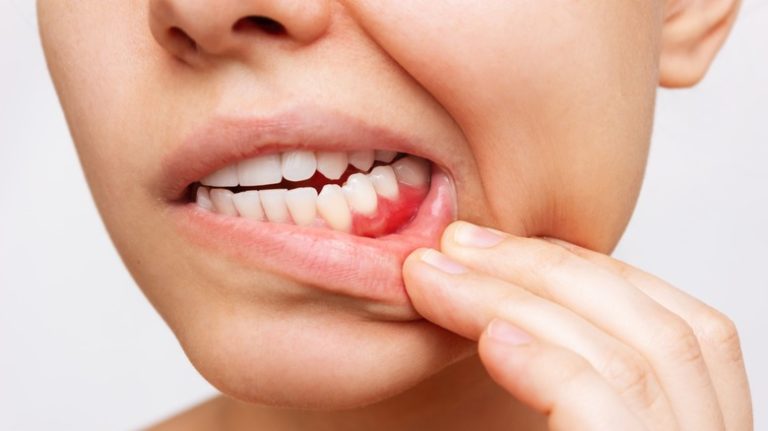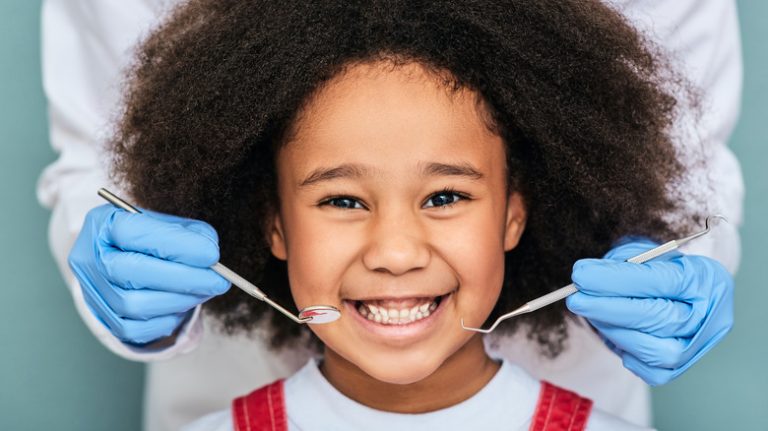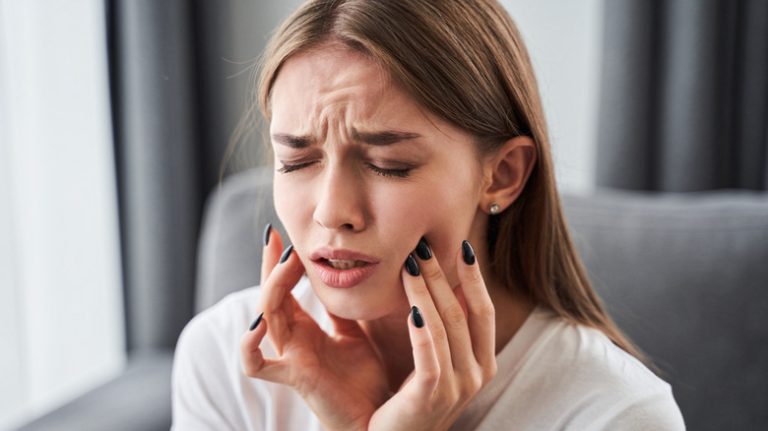You’ve finally gotten down to the very end of your tube of toothpaste and now it’s time to head to the store or place an online order for a new one. So how do you decide what kind of toothpaste to purchase? Believe it or not, varieties of toothpaste go well beyond just their flavors. According to Olympia Hills Family Dental, types of toothpaste often fall into one of five major categories: children’s toothpaste, teeth-whitening toothpaste, toothpaste for sensitive teeth, herbal toothpaste, and smoker’s toothpaste, which caters to stain removal. Additionally, some toothpaste products contain fluoride, while others may be fluoride-free.
According to experts at Arm & Hammer, there are a number of factors to consider when deciding how heavily to lather on the toothpaste to our toothbrush. Such factors include age, what kind of toothpaste you like to use, and whether or not you rinse after the fact. However, one factor that does not affect the amount of toothpaste one should use, is toothbrush type. Whether you use an electric or manual toothbrush or prefer a hard or soft-bristled toothbrush, the recommended amount of toothpaste we should be squeezing out onto our toothbrush remains the same.
Recommended amounts of toothpaste for adults versus children
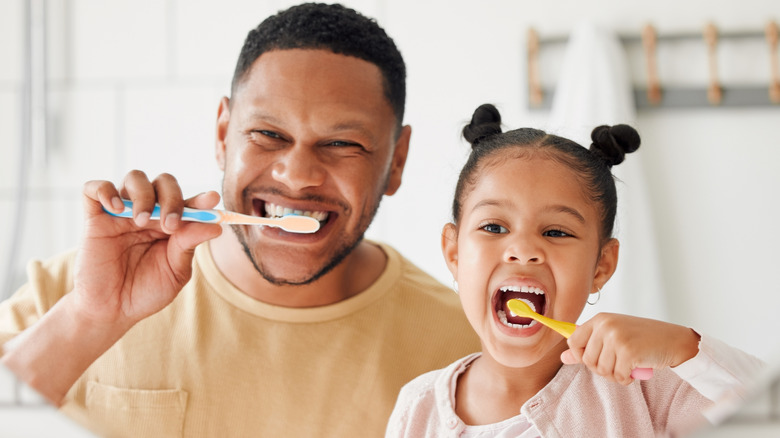
When it comes to toothpaste, less is more. Specifically, experts say that adults should be dispensing no more than a pea-sized dab of toothpaste onto one’s toothbrush (via Arm & Hammer). This remains true regardless of whether or not your toothpaste contains fluoride.
For young children, the recommended amount of toothpaste is even smaller. According to the U.S. Centers for Disease Control and Prevention (CDC), kids under the age of three should be using a smear of toothpaste equivalent to the size of a grain of rice beginning when their first tooth emerges. Once they turn 3 years old, children can begin using a pea-sized amount of toothpaste, just as adults are recommended to. However, CDC research gathered between 2024 and 2024 revealed that roughly 40% of children between the ages of three and six were overdoing it on toothpaste. While it’s easy to think “the more the merrier” when it comes to toothpaste, dousing our pearly whites with too much fluoride can pose potential oral health risks to children.
What happens if you use too much toothpaste?
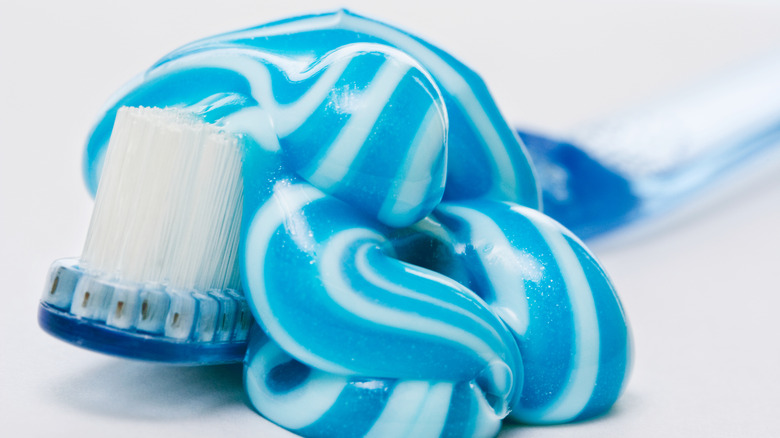
When brushing our teeth, children in particular, tend to be at an elevated risk for ingesting fluoride. According to the CDC, overconsumption of fluoride from toothpaste can leave young children with developing teeth susceptible to a condition known as dental fluorosis. The condition is characterized by tooth discoloration and the development of holes in the tooth enamel. In an interview with ABC27, dentist Dr. Gary Klein stated that this can take the form of brown or white markings on a child’s permanent teeth. However, Dr. Klein reassures caregivers that the risk of fluorosis goes away once a child turns seven years of age.
For this reason, it’s important to stick to that grain of rice-sized toothpaste smear when it comes to young children (via CDC). Another way to measure whether you’re administering a proper amount of toothpaste on a child’s toothbrush is to keep track of how long the child’s toothpaste lasts (via ABC27). If dispensed properly, a travel-sized tube of toothpaste should last a child for one year. For the rest of us, sticking to a pea-sized dab of toothpaste will not only help keep teeth healthy but make that empty tube of toothpaste last a little longer.

